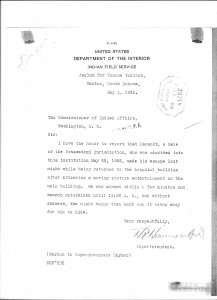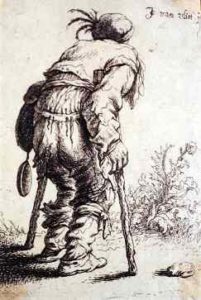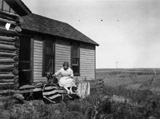Older methods of curing illness often included bloodletting, the practice of purposely lancing a patient’s flesh in order to get blood flowing. Quantities extracted could be quite small or surprisingly voluminous, depending upon the individual doctor’s beliefs about its effectiveness. Many doctors nearly bled their patients to death, and this type of aggressive, “heroic” medicine fell out of favor during the nineteenth century. Continue reading
Category Archives: Canton / Commerce City, S. Dakota
Not So Undercover
The Canton Asylum for Insane Indians had frequent visitors, who were welcome to tour the facility during visiting hours. (See last two posts about visitors.) When the editor of the Hudsonite showed up unannounced–and not on a visiting day–he was nonetheless welcomed and given a tour by the asylum’s financial clerk, Charles Seely. Continue reading
Asylum Visitors
Though few people wanted to be in an asylum–probably including its staff at times–many people did go to asylums either out of a sense of duty or of curiosity. Bands from a nearby town would often provide music for patients, while other people would offer lectures, magic lantern shows and other entertainments, or conduct religious services. Continue reading
A Run for Freedom
Patients were often brought to insane asylums against their wills, and then stayed in them against their wills. Many were heartbroken to think that relatives or spouses would commit them to treatment in such places, and some patients discovered to their horror that there would be little chance of returning to their homes. Continue reading
Asylum Winters
When the Canton Asylum for Insane Indians was new, its electric lights and coal heat were luxuries many of its patients had not experienced before. It seems undeniable that they received attention for their physical problems or illnesses, though any psychiatric treatment was rudimentary at best. However, as more patients arrived and the ratio of attendants to patients increased, care in this relatively tiny asylum began to decline in quality. Continue reading
Canton Winters
Canton, South Dakota was an extremely small town of around 100 people in the 1870s, when it consisted mainly of vacant lots. By 1880, more than 600 people lived there; the city was incorporated a year later and began to build in earnest. Residents were affected by the weather just as isolated settlers were, losing their crops to grasshopper infestations and enduring bitter cold and arid droughts. Continue reading
Garden Problems
Many insane asylums had gardens which grew both flowers and produce. The Canton Asylum for Insane Indians included a garden that provided supplemental fresh food for staff and patients, but sometimes with indifferent results.
South Dakota was subject to harsh and unpredictable weather, with great temperature swings at times, drought, and pests. Continue reading
Stigma Attached to the Insane
Most people would not be ashamed of breaking a leg or falling ill with the flu, and their family members likewise would not mind the world knowing about either condition. However, the same kind of acceptance has rarely applied to mental afflictions. There are many reasons for this lack of acceptance, but early issues included the probability of “getting well” or being permanently cured of a mental problem. Continue reading
Dr. Hummer’s Credentials
Dr. William A. White was an undisputed leader in the field of psychiatry (see last post). He was St. Elizabeths’ superintendent for over twenty years, and implemented many innovations. St. Elizabeths endured its own cycles of overcrowding, scandals, and investigations, but it was generally considered one of the leading institutions of its kind. It attracted some of the country’s best psychiatrists and researchers, who wanted to be affiliated with the asylum and its good reputation. Continue reading
Long Distance Oversight
Few people ever wanted to enter an insane asylum, no matter how well run or up-to-date it was. And, like all institutions run by fallible human beings, asylums were not immune to mistakes and misjudgments on the part of their staffs. One problem the Canton Asylum for Insane Indians faced that St. Elizabeths and McLean didn’t (see last few posts) came as direct consequence of its long-distance oversight.
The Canton Asylum for Insane Indians was not under a trustee or board of visitors system like the other two asylums, though it is certainly untrue that this establishment was never inspected or investigated. However, the asylum was managed for the most part from thousands of miles away. The asylum’s superintendent in Canton reported directly to the commissioner of Indian Affairs in Washington, DC, and the seven commissioners who held the position during the time the asylum was open very seldom, if ever, actually visited the place.
Agents or inspectors from the Indian Office did come by fairly regularly, but none of these men were psychiatrists. They found it difficult to determine how well the patients were being treated for mental health issues, and usually confined themselves to commenting on the state of the buildings and how efficiently the superintendent ran his farming operation. Medical staff from the Indian Office eventually began visiting much more often as the asylum grew in size and came to the notice of the commissioner through complaints. Dr. Emil Krulish became a frequent visitor and made numerous criticisms that honed in on treatment and the way the superintendent, Dr. Harry Hummer, managed his personnel and patients. However, his voice was ignored and Hummer continued to thrive in his position.
______________________________________________________________________________________











